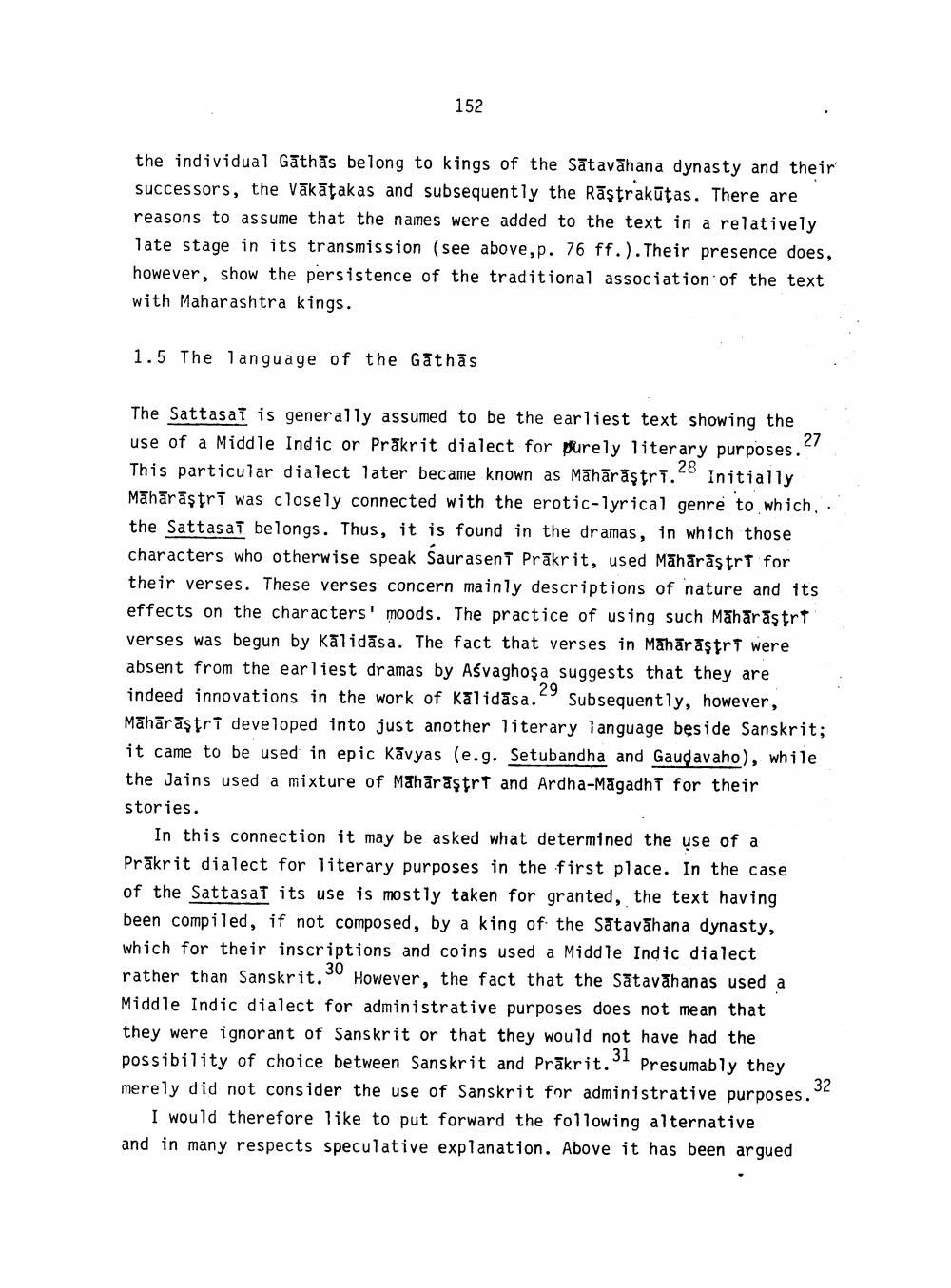________________
152
the individual Gathās belong to kings of the Sātavāhana dynasty and their successors, the Vākāțakas and subsequently the Rāştrakūtas. There are reasons to assume that the names were added to the text in a relatively late stage in its transmission (see above,p. 76 ff.). Their presence does, however, show the persistence of the traditional association of the text with Maharashtra kings.
1.5 The language of the Gathās
The Sattasaí is generally assumed to be the earliest text showing the use of a Middle Indic or Prākrit dialect for purely literary purposes." This particular dialect later became known as Māhārāştri. Initially Māhārāştrī was closely connected with the erotic-lyrical genre to which, the Sattasai belongs. Thus, it is found in the dramas, in which those characters who otherwise speak SaurasenT Prākrit, used Māhārāş trt for their verses. These verses concern mainly descriptions of nature and its effects on the characters' moods. The practice of using such Maharaştrt verses was begun by Kalidasa. The fact that verses in Maharastrt were absent from the earliest dramas by Aśvaghoşa suggests that they are indeed innovations in the work of Kalidasa. Subsequently, however, Māhārās trī developed into just another literary language beside Sanskrit; it came to be used in epic Kavyas (e.g. Setubandha and Gauqavaho), while the Jains used a mixture of Māhārāştrt and Ardha-Magadht for their stories.
In this connection it may be asked what determined the use of a Prākrit dialect for literary purposes in the first place. In the case of the SattasaT its use is mostly taken for granted, the text having been compiled, if not composed, by a king of the Satavāhana dynasty, which for their inscriptions and coins used a Middle Indic dialect rather than Sanskrit. However, the fact that the Sātavāhanas used a Middle Indic dialect for administrative purposes does not mean that they were ignorant of Sanskrit or that they would not have had the possibility of choice between Sanskrit and Prākrit.” Presumably they merely did not consider the use of Sanskrit for administrative purposes."
I would therefore like to put forward the following alternative and in many respects speculative explanation. Above it has been argued




